We use information collected through cookies and similar technologies to improve your experience on our site, analyze how you use it and for marketing purposes.
Your privacy settings
We and our partners use information collected through cookies and similar technologies to improve your experience on our site, analyze how you use it and for marketing purposes. Because we respect your right to privacy, you can choose not to allow some types of cookies. However, blocking some types of cookies may impact your experience of the site and the services we are able to offer. In some cases, data obtained from cookies is shared with third parties for analytics or marketing reasons. You can exercise your right to opt-out of that sharing at any time by disabling cookies.
Manage Consent Preferences
Necessary
Always ON
These cookies and scripts are necessary for the website to function and cannot be switched off. They are usually only set in response to actions made by you which amount to a request for services, such as setting your privacy preferences, logging in or filling in forms. You can set your browser to block oralert you about these cookies, but some parts of the site will not then work. These cookies do not store any personally identifiable information.
Analytics
These cookies and scripts allow us to count visits and traffic sources, so we can measure and improve the performance of our site. They help us know which pages are the most and least popular and see how visitors move around the site. All information these cookies collect is aggregated and therefore anonymous. If you do not allow these cookies and scripts, we will not know when you have visited our site.
Embedded Videos
These cookies and scripts may be set through our site by external video hosting services likeYouTube or Vimeo. They may be used to deliver video content on our website. It's possible for the video provider to build a profile of your interests and show you relevant adverts on this or other websites. They do not directly store personal information, but are based on uniquely identifying your browser and internet device. If you do not allow these cookies or scripts it is possible that embedded video will not function as expected.
Google Fonts
Google Fonts is a font embedding service library. Google Fonts are stored on Google's CDN. The Google Fonts API is designed to limit the collection, storage, and use of end-user data to only what is needed to serve fonts efficiently. Use of Google Fonts API is unauthenticated. No cookies are sent by website visitors to the Google Fonts API. Requests to the Google Fonts API are made to resource-specific domains, such as fonts.googleapis.com or fonts.gstatic.com. This means your font requests are separate from and don't contain any credentials you send to google.com while using other Google services that are authenticated, such as Gmail.
Marketing
These cookies and scripts may be set through our site by our advertising partners. They may be used by those companies to build a profile of your interests and show you relevant adverts on other sites. They do not store directly personal information, but are based on uniquely identifying your browser and internet device. If you do not allow these cookies and scripts, you will experience less targeted advertising.
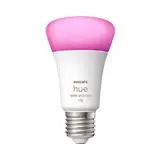
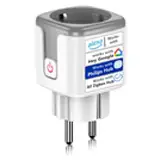
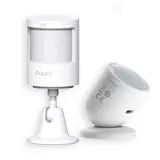
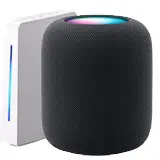
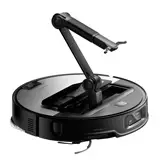
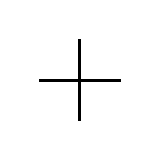
How do smart solar panels work?
Can you imagine solar panels that not only capture sunlight, but also think and adapt to maximize their efficiency? Welcome to the world of smart solar panels! Forget conventional solar installations. We are talking about a more efficient, sustainable and, above all, smart energy future. In this article, we'll explore in depth how these cutting-edge devices work, their advantages and how they could transform the way we generate and consume energy.
What are Smart Solar Panels?
Smart solar panels are essentially traditional solar panels, but with an additional layer of technology. This technology includes microinverters, energy optimizers and advanced monitoring systems. This combination allows each panel to operate independently and optimize its performance in real time. Unlike conventional systems, where a single inverter handles the entire solar array, smart panels offer greater flexibility and efficiency.
Key Components of a Smart Solar Panel
To understand how they work, it is crucial to know their main components:
How Do Smart Solar Panels Work? A Detailed Process
The power generation process with smart solar panels is similar to that of traditional panels, but with significant optimizations at each stage:
Practical Example: A Sunny Day with Shadows
Imagine a sunny day when a tree casts a shadow on part of your solar installation. In a traditional system, the shadow on one panel would affect the performance of the entire string of panels connected to the same inverter. With smart solar panels, the energy optimizer or microinverter in the shaded panel will automatically adjust to minimize energy loss. The other panels will continue to operate at their maximum capacity, maximizing total energy production.
Key Advantages of Smart Solar Panels
The adoption of smart solar panels offers numerous advantages over traditional systems:
Comparison Chart: Smart Solar Panels vs. Traditional Solar Panels
Costs and Benefits: Worth the Investment?
Initially, smart solar panels may cost more than traditional systems. However, in the long run, the benefits outweigh the initial investment. Higher energy efficiency, reduced risk of failure and increased durability contribute to a faster return on investment (ROI) and significant savings in maintenance costs. In addition, many governments offer tax incentives and subsidies for the installation of smart solar systems, further reducing the initial cost.
Simplified Cost-Benefit Analysis
Let us consider a hypothetical example:
In this case, the smart system would generate $200 more electricity per year ($7,000 kWh x $0.20 - $6,000 kWh x $0.20). In addition, he believes that the smart system can have fewer outages and a longer lifetime, which reduces maintenance and replacement costs.
Installation and Maintenance of Intelligent Solar Panels
The installation of smart solar panels is similar to that of traditional panels, but requires a deeper understanding of microinverter and optimizer technology. It is crucial to hire a certified and experienced installer who is familiar with these systems. A professional installer will be able to ensure a correct and safe installation, maximizing the long-term performance of the system.
Tips for Successful Installation
Regular Maintenance
Maintenance of smart solar panels is relatively simple. It is recommended to clean the panels regularly to remove dirt and dust that may affect their performance. It is also important to inspect the microinverters and cables for any signs of damage or corrosion. Regular maintenance will prolong the life of the system and ensure optimum performance.
The Future of Solar Energy: Smart Panels and Beyond
Smart solar panels represent an important step towards a more sustainable and efficient energy future. However, innovation in the solar energy field continues at a rapid pace. We are seeing advances in:
The combination of these technologies with smart solar panels promises to revolutionize the way we generate, store and consume energy in the future. Imagine a world where every home and building is a small power plant, generating clean, renewable energy efficiently and autonomously.
Recommendations and Best Practices for Making the Most of Smart Solar Panels
To make sure you get the most out of your smart solar panel investment, consider the following recommendations:
Conclusion: A Bright Future Powered by Smart Solar Energy
Smart solar panels are much more than just solar panels. They are an investment in a cleaner, more efficient and sustainable energy future. Their ability to optimize performance, monitor the system in real time and adapt to different conditions makes them an attractive option for homes, businesses and industries.
If you are considering investing in solar energy, we encourage you to explore smart solar panel options. Do your research, compare different models and consult with experienced installers to find the solution that best suits your needs and budget.
What do you think about the future of smart solar? Share your thoughts and experiences in the comments! And if you found this article useful, share it with your friends and family!
Related Posts
TOP 5 gadgets to reduce water consumption
Are you concerned about the impact your water consumption has on the planet? You're not alone. Reducing your water consumption is not only good for the environment, but it can also help you save money on your bills. The good news is that there are innovative gadgets that make saving water more ...
Is an autonomous 100% home with renewable energy possible?
Can you imagine living in a home that is completely self-sufficient with clean energy? An autonomous 100% home with renewable energy. Sounds futuristic, right? But, it's more achievable than you think! Forget about electricity bills and embrace a sustainable lifestyle. In this article, we will explore whether it is really possible to achieve this ...
Wireless homes: What devices run on batteries?
Imagine a home with no tangled wires, no plugs in sight. A minimalist, modern home where power flows wirelessly. Sounds like science fiction, doesn't it? Well, the reality is approaching by leaps and bounds. More and more devices are becoming battery-powered, freeing us from the tyranny of wires and transforming the way we ...
How to save electricity with smart plugs
Are you worried about your electricity bill going up? Want to reduce your carbon footprint without making things complicated? Smart plugs could be the solution you've been looking for. They're not magic, but they're close. They let you control the energy consumption of your electrical devices, saving you money and contributing to a more sustainable planet.